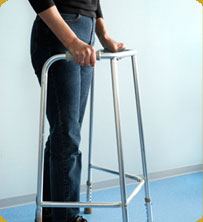Disability….a loss of freedom and independence. Simple tasks becoming difficult if not impossible. Disability is really a loss of the ability to perform day to day activities many of us just take for granted: bathing, eating, dressing, getting in and out of bed or just being able to walk across a room. There’s been study after study showing that greater physical activity significantly reduces the chance of disability. This reduction in the likelihood of lost function wonderfully happens both in time frames close to the exercise (the months and years it’s done) as well as many years later. It’s wonderful news….less pain, more mobility, greater function and more freedom! Who among us doesn’t want that?
Well, a recently published research paper out of Northwestern University and published in The Journal of Physical Activity and Health has demonstrated for the first time that even in the presence of moderate or even vigorous regular exercise….more sitting is an actual predictor of disability after the age of 60. As a matter of fact, the posture of sitting for any length of time was nearly as great a predictor for disability as a reduction in even moderate exercise. This finding has been demonstrated in animal research in the past but this is the first time that objective measurements have shown this to occur in people.
To simplify the findings, imagine two 65 year old women who have sedentary time each day. One is sedentary for 12 hours and the other for 13 hours….well the lady who is sedentary one more hour is actually twice as likely to be disabled as the other! Amazing! So older adults really need to decrease the amount of time sitting and that includes time in front of the computer, watching TV and every other seated activity….and that is regardless of any engagement in moderate or vigorous activity.
In order to cut down on sitting time, a few simple ideas may get other ideas flowing:
- Stand up when you talk on the phone or during a work meeting.
- When you go to grocery store or mall, park in a space farthest away.
- When you get up to have glass of water, walk around the house or office.
- Walk for short errands instead of taking the car.
- Take the stairs instead of the elevator, if you are able.
The take away from this study is simply this….stay active AND sit less! To view the article in its entirety, follow this link and then step away from your computer!!
http://journals.humankinetics.com/jpah-in-press/jpah-in-press/sedentary-time-in-us-older-adults-associated-with-disability-in-activities-of-daily-living-independent-of-physical-activity



